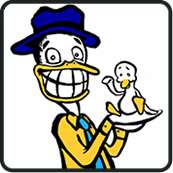We're not trying to violate the moral of Dead Poet's Society or anything, but to recognize a poem, concentrate on these five elements:
- Attention to the line as a basic element, not the sentence. The line is a poem's most basic unit. The length of each line of a poem is part of its composition. Compare this to normal prose, where it doesn't really matter where on the page the sentence ends, just so long as it ends.
- Greater focus on the sound of words. The most obvious way poems make unique use of sound is through rhyme. Full rhyme, rhyming the last word of each line, has become less frequent in this century, as modern poets find the technique too simple and predictable. However, looser types of half rhyme, matching some of the sounds between words at various places throughout a poem, are still a fundamental component of most modern poetry. Rhythm (the flow and beat of a poem) is another important aspect of a poem's sound.
- Density. This refers to a poem's richness in texture that is, the level of mental effort required to draw out its multiple levels of meaning and emotion. We read poetry more slowly and carefully than other prose because of these subsurface meanings that arise from what the words imply, their connotations, in addition to what they mean literally, their denotations. Much of poetry's density comes from its focus on simile, metaphor and symbolic language.
- Associations. By associating concrete images in unexpected ways, poetry is able to get closer to abstract concepts like Life and Love and Death, engaging our emotions rather than our intellect.
- Irony. Often a poem introduces distance between what happens or is said and what we expect to happen or to perceive, causing us to feel the tension between the two conflicting ideas. This uneasy (and sometimes amusing) distance, or disassociation, is called irony.
SoYouWanna know more? Check out our full-length article SYW interpret a poem?

